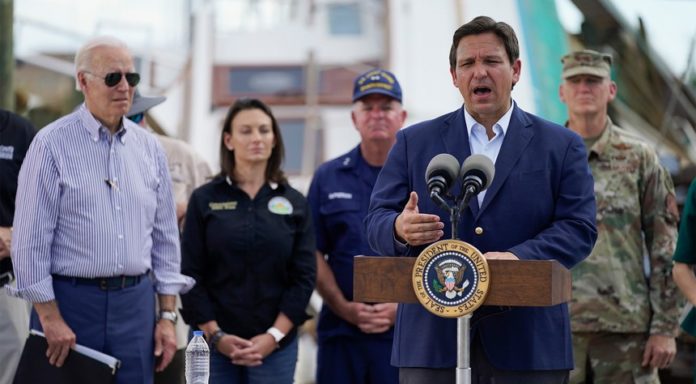The recovery is impressively moving forward despite initial criticisms about the hurricane response and pre-storm criticisms.
CNN published a strange news story about the election to be held in storm-torn southwest Florida. To facilitate voting for those who have been adversely affected by Hurricane Ian’s destruction of infrastructure and other physical problems, contingencies have been put in place.
Early voting will be extended in the three counties hardest hit by the storm. Sarasota and Charlotte, as well as Lee Counties, will have expanded early voting sites. Additionally, restrictions that required citizens to vote in their precincts have been lifted. A second option was to allow mail-in ballots to be sent to another address for residents in affected areas.
These are sound and practical responses considering that common voting locations such as schools and municipal facilities may be damaged or inaccessible. These decisions are surprising to some because they were made by Governor Ron DeSantis via executive order. The press claims that the alleged leader of the state is an authoritarian who seeks to restrict his citizens. However, he does not seem to be able to lead by granting freedom.
DeSantis isn’t surprised to be opposed to media claims. Most of the criticisms directed at him are based upon insisted-upon claims and not actual evidence. This is the governor who was called a “fascist” when he allowed Floridians to choose whether or not they wanted to wear a mask. DeSantis was branded a totalitarian by those who wanted government-mandated vaccines and mask requirements. This is because he allowed people to decide their own affairs.
The media that had been insisting DeSantis was bungling hurricane recovery have cooled down. Their silence is a sign of how smoothly things have gone. FEMA and DeSantis worked together to quickly respond to the most affected areas. The unknown is the fact that a second bridge was repaired to an island cut off. This week, relief crews made their way onto Sanibel Island. The bridges were expected to be repaired by the end of the month.
Absolutely amazing to see emergency vehicles full of resources crossing the newly repaired #Sanibel Causeway today. Kudos to @GovRonDeSantis, @KevinGuthrieFL, and @FDOT_Secretary and everyone involved in making this a reality just weeks after Hurricane #Ian. pic.twitter.com/3fM3pXdCNq
— Jimmy Patronis (@JimmyPatronis) October 11, 2022
A surprising outcome has been the restoration and reconnection of electricity in affected areas. Talking to someone who was involved in the restoration effort, I learned that over 2 million people lost their power due to the storm. They spent two weeks in Fort Meyers’ worst-hit areas, and they told me how awful the conditions were. But they also showed me how much progress they are making.
They had to deal with flooding in their homes that affected connectivity efforts. Some homes have eight-foot watermarks. In these cases, the electric meter boxes at the residence were submerged, and reconnecting could have resulted in the box failing, which would pose a danger to the structure. Residents had to sign liability waivers in order to be located. The evacuation was difficult. Once the grid was restored online, a technician visited each house to reconnect the connections.
Another problem they encountered was the large number of boats that had been left on power lines. The problem was that even though they cleared other debris from roads and places, the insurance requirements meant that they couldn’t remove the boats. They could not remove the boats that were affecting the recovery until they contacted the owner and then the insurance company. The preparations were crucial, despite the many unanticipated side effects.
The damage from #HurricaneIan is “catastrophic” and historic.pic.twitter.com/OY323JCzyQ 03
— Tomthunkit™ (@TomthunkitsMind) October 14, 2022
Before Ian arrived, thousands of electricians had been brought in. Officials in Florida had never seen such an effort before, which allowed them to complete work in record time. They set up workers at the Florida Panthers hockey arena in Sunrise. Southeast Florida was not affected, as it is close to the road that leads to the most severely hit areas.
They were mobilized immediately after the west coast cleared and could begin to restore services at a pace not seen since previous storms. Today, more than 95% of the services that were lost have been restored, out of over 2 million. These results are even more remarkable when you consider that this was a rare Category-4 event.
Although it will be many years before things get back to normal, Florida is experiencing some relief. This is happening in a way that was not anticipated.
Team Rubicon, a group that sends in veterans from the military to help with recovery efforts, is an excellent option if you are interested in lending assistance.


